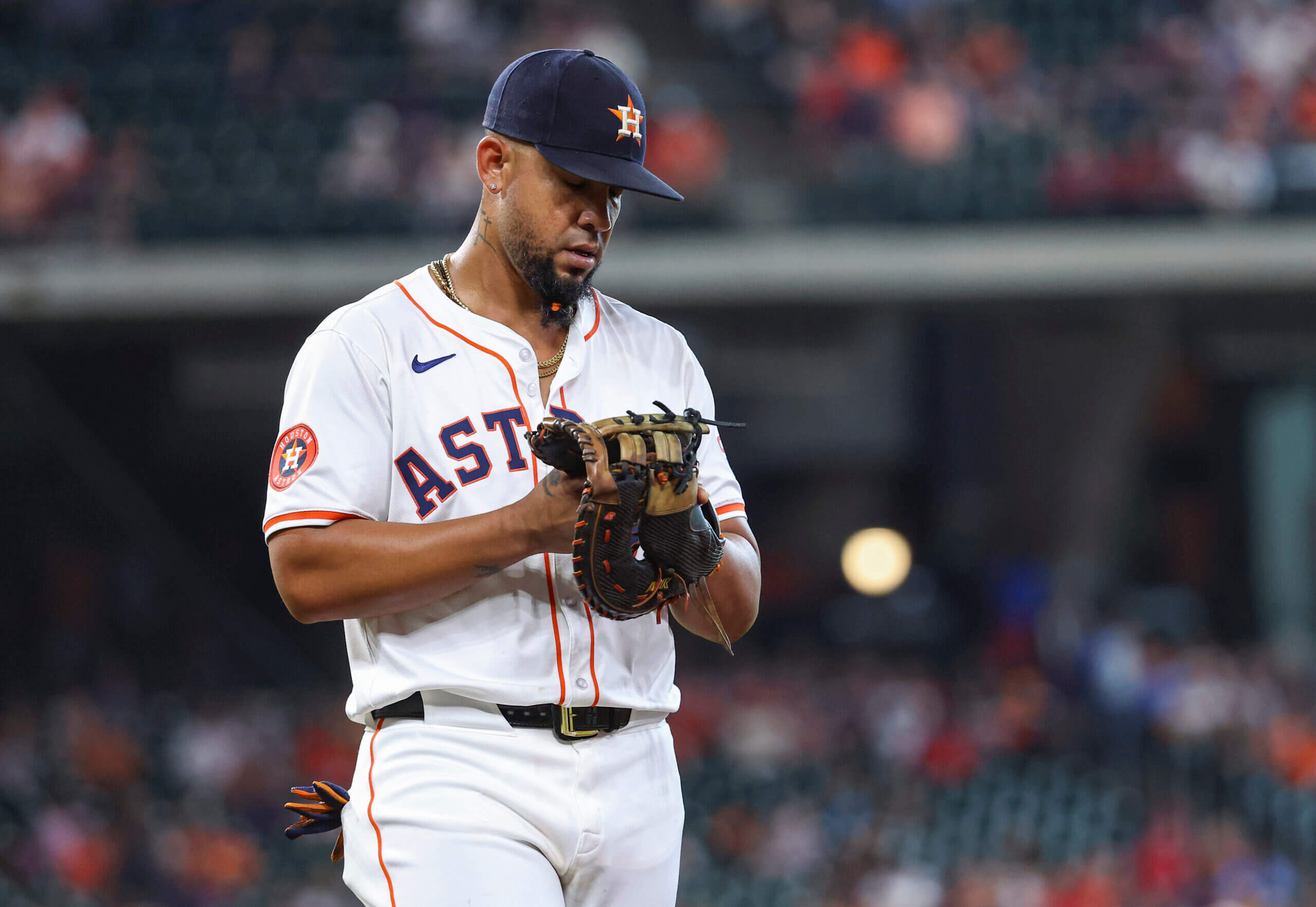HOUSTON — The baseball world will descend upon Dallas with the Houston Astros still in search of a direction. Conversations with people inside and outside of the organization have yielded more ambiguity than absolutes about their offseason plans — myriad options but few conclusions on how to confront a crossroads.
Some within the Astros’ organization have sought clarity from decision-makers throughout the past month and a half. Most have been unsuccessful, but front offices aren’t mandated to keep everyone apprised of their methods. General manager Dana Brown has maintained the “biggest priority” is retaining third baseman Alex Bregman.
Brown’s bullishness placates the fan base, but overlooks larger questions that bringing back Bregman won’t answer. Brown has already promised “nothing is off the table” during an offseason in which he acknowledged the Astros “may have to get a little bit creative.”
The Winter Meetings may illustrate how imaginative Houston will be. The team’s aging major-league roster and fallow farm system prompts legitimate concerns about its sustainability. Still, it will return a core within a weak American League West that portends championship contention in 2025, and owner Jim Crane expects nothing less.
He has claimed the Astros’ championship window will remain open throughout his ownership tenure, a declaration that is becoming more difficult to guarantee. Brown must try, anyway, to balance the demands of an involved owner with the club’s sobering reality.
People familiar with how Crane operates have wondered whether he could stomach any moves that run counter to his vision of a wide-open championship window. Brown could engineer one of them this winter, all the while altering the sport’s entire offseason landscape. Whether he has the autonomy to author it is unclear.
Making either Kyle Tucker or Framber Valdez available in trade discussions may be the easiest path for Houston to balance its present and future. Both men are estimated to make more than $15 million in their final trip through the arbitration process. Next winter, both will demand the sort of free-agent deals Crane is loath to give. Parting with either Valdez or Tucker would not signal a rebuild, but would bring back the sort of prospect haul to help stabilize a fledgling farm system. The team could still contend in 2025 without them — especially in such a subpar division — though it is undoubtedly a more arduous task.

Brown and his lieutenants have already discussed moving setup man Ryan Pressly and his $14 million salary. That it has even been floated within the industry may signal Brown’s willingness to make the sort of “creative” move he alluded to earlier this winter — and perhaps an inclination to listen on Valdez or Tucker. Pressly’s age, no-trade clause and uneven 2024 season will complicate any potential trade discussions. Almost no impediments exist with Tucker or Valdez, who would be of interest to every team trying to contend. It would be a dereliction of duty for Brown not to entertain the thought.
According to FanGraphs, only three outfielders have been worth more wins above replacement than Tucker since 2022. Valdez is just one of 11 pitchers to throw 710 innings since 2021. His ERA in that span is 3.08. A parallel between Valdez’s availability and Milwaukee’s trade of Corbin Burnes last winter is easy to create.
The Brewers still captured the National League Central after trading Burnes. The Tampa Bay Rays have trademarked this entire process — offloading well-performing players they won’t have a prayer to keep long-term. Whether Houston is prepared to replicate the process is unclear. If Crane is comfortable exceeding the luxury tax for a second consecutive season, it stands to reason that Houston could keep both players and pursue complementary pieces in free agency.
The players’ union frowns upon any owner offering an outright declaration that they won’t cross the luxury tax, so Crane remained diplomatic when confronting the question last month.
“We’ve done it,” he said. “We’ll see where we end up. It depends on what we need and where the shoes drop.”
Last winter, people familiar with Crane’s thinking maintained he was open to paying the luxury tax, but only for a meaningful addition to Houston’s roster. Signing closer Josh Hader to a five-year, $95 million contract — the largest free-agent deal of Crane’s ownership tenure — sufficed as that substantial upgrade. That Crane coveted Hader during the 2023 trade deadline can’t be overstated in Houston’s decision-making.

Crane paid the luxury tax for the first time as a result, part of the largest payroll in franchise history. Last month, he claimed his club has the “wherewithal” to spend in a similar manner. In the same breath, Crane cautioned against “going crazy.”
Next season, Houston must pay José Abreu $19.5 million not to play first base, Cristian Javier $12.8 million to rehab a torn ulnar collateral ligament and $11.5 million for reliever Rafael Montero to reside off the 40-man roster. What, if anything, the Astros will extract from $17 million starter Lance McCullers Jr. is another mystery. As a result, approximations have the Astros anywhere from $10 to $12 million under the first luxury tax threshold. Crossing it may be inevitable to make any meaningful improvements for a roster in need of at least one offensive upgrade, a starting pitcher and one leverage reliever.
Most other teams in pursuit of Bregman aren’t faced with similar problems. In September, Bregman told The Athletic that winning “for my whole career” is “what I value the most coming up.”
Houston is still engaged with Bregman, but nothing in the franchise’s past suggests it will meet his asking price. Little in its present suggests it can fulfill his biggest priority.
(Top photo of Alex Bregman: Alex Slitz / Getty Images)





